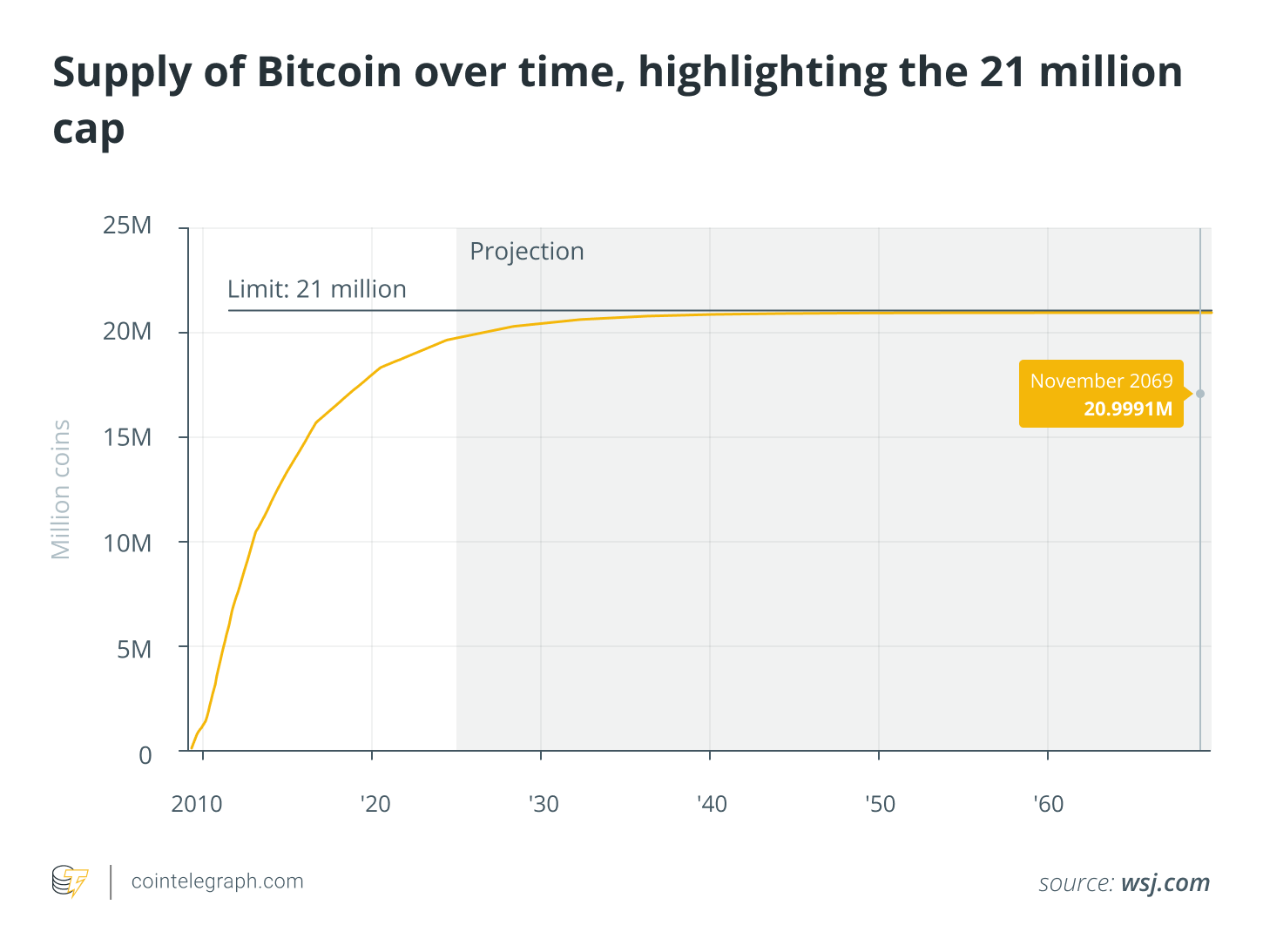
What is a Hard Cap?
A hard cap defines the maximum supply of a cryptocurrency that can ever exist, embedded within the blockchain’s code to ensure a strict limit on how many tokens can be created. This limit is pivotal for maintaining scarcity, which can potentially enhance the value of each token over time.
Using Bitcoin (BTC) as a prime example, its creator, Satoshi Nakamoto, imposed a hard cap of 21 million coins. This cap ensures that regardless of demand or mining efforts, the supply remains bounded at this maximum.
Why is a Hard Cap Important?
The absolute scarcity of Bitcoin is critical; it positions Bitcoin as digital gold but with even more restrictions. An increase in demand without the ability to create new coins could drive prices upward. Altering a cryptocurrency’s foundational code would be necessary to increase supply.
For contrast, consider gold: if extraction were to become easier and the supply increased, the price would likely drop. Bitcoin, thanks to its fixed supply cap, avoids this predicament.
Hard Cap vs. Soft Cap in ICOs
The term “hard cap” is also utilized in the domain of Initial Coin Offerings (ICOs). It signifies the maximum fundraising amount targeted, contrasting with the soft cap, which denotes the minimum required to launch the project.
This distinction fosters transparency and scarcity nuances in both total supply and fundraising.
The Significance of Bitcoin’s 21 Million Cap
The 21 million hard cap of Bitcoin mirrors its DNA and encompasses the reasons for its perceived value and status as a digital asset akin to gold. People perceive it as vital for retaining value and recognize Bitcoin’s role at the pinnacle of the cryptocurrency assets.
Debates are ongoing regarding the potential changes to this cap. If an attempt were made to inflate Bitcoin’s supply—akin to increasing gold production—its value could diminish due to supply surge.
Proposals to Change the 21 Million Cap
Despite the prevalent belief in Bitcoin’s 21 million cap, there have been discussions regarding its modification over the years. Some early concerns involved whether an inflationary model might be necessary once all Bitcoin is mined to maintain miner incentives. Satoshi Nakamoto responded to these concerns by proposing transaction fees could replace block rewards.
Hal Finney, an early Bitcoin adopter, pondered the thought of altering the cap but firmly viewed it as a hypothetical scenario and remained a supporter of Bitcoin’s scarcity.
Discussions around changing the 21 million supply cap face strong opposition, similar to earlier debates regarding block sizes that caused a split in the community, leading to Bitcoin Cash.
What if the 21 Million Hard Cap Changed?
Altering Bitcoin’s 21 million cap would likely result in widespread distrust among users, which could stimulate panic in the market. Investors might sell off dramatically as the core integrity of Bitcoin’s value proposition—stemming from its scarcity—is undermined.
Moreover, attempts to modify the cap might invoke a hard fork, splitting the community between advocates for change and defenders of the current structure. This scenario could see the emergence of alternative Bitcoin versions, though historical trends suggest such duplicates seldom achieve success.
Final Thoughts
Ultimately, while it may be conceivable to adjust Bitcoin’s hard cap, historical and communal resistance points toward significant challenges. These discussions about its cap highlight Bitcoin’s enduring principles that its community remains committed to protecting.


